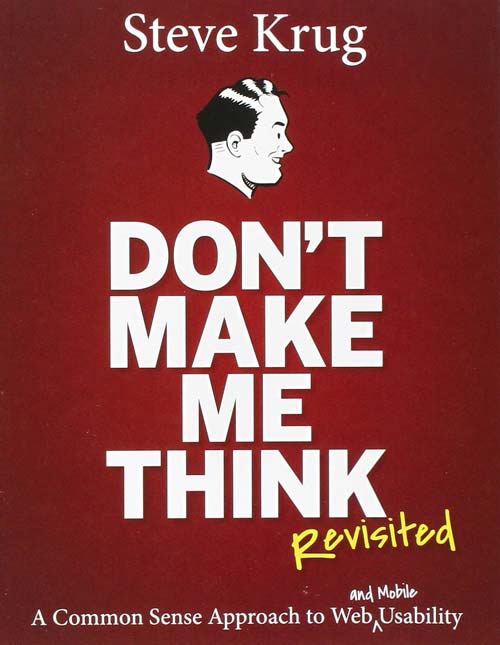It’s hard to consistently get useful feedback on design work. This post introduces the techniques for getting the most out of your questions—so you can improve as a designer.
“Oh, it's good.”
“I like it. It looks nice. Good colors, dude... I gotta get back to work in a minute.”
I bet you’ve heard feedback like that before. Not very helpful, right? What you actually wanted was precise, actionable feedback so that you can improve your design work—not vague statements.
If you’ve ever asked a friend or colleague for feedback on a design, these are likely the responses you received—perhaps coupled with a shy smile and discomfort as they tried to avoid hurting your feelings.
This fruitlessness leads many designers to tune out feedback entirely, and to go from mockup to production entirely on their “instincts”. Is this the right path?
Nope. As we’ll see, feedback is vital. And there’s a right way to ask for feedback so that you get good thoughts from everyone — every time you ask. We're going to learn them in this post.
Why feedback is so important
When done correctly, receiving feedback is the most valuable part of any designer’s process. It doesn’t matter how experienced the designer is. Without feedback from other people, you cannot be sure your work will be appreciated and understood by anyone other than yourself. There are approximately three billion people in the world with an Internet connection, all of whom have a completely different set of experiences, biases, and preferences. Trying to design anything in isolation—in my opinion—is madness.
Other people also provide insights that never would have occurred to you, thanks to their unique set of experiences and skills. Draw from the diversity, and use it to your advantage.
Personally, I always have my blog posts and my site designs reviewed by several people before publishing. This ensures that they are coherent, understandable, engaging, and provide actual value to others—that they’re not just crazy ramblings filled with errors. To be able to reach out to enough people, you can try creating a survey with the specific set of questions that you are most inquisitive about. Then sharing that survey within designer related groups and social news sites would possibly give you the most diverse and healthy feedback.
For website design in particular, a second pair of eyes helps to ensure that 1) the design is visually pleasing to a variety of tastes, and 2) the designer’s intentions are clear.
How to ask for feedback
Often, when we receive generic feedback, we blame the person being asked. But the mistake rests with us—not them. This mistake is natural, though; communicating complex questions and answers is not a skill we’re born with.
So we need social hacks. We need tricks to master the communication process.
The most important aspect of getting insightful, actionable feedback is to create an environment where the person you’re asking for feedback from is as comfortable as possible. Stress and anxiety ruin our ability to think clearly and critically, and fear of insulting others prevents us from saying what we really think.

In order to create an environment of comfort, below is what we need to do. We’re going to explore these concepts further, and learn the associated techniques:
Give people advanced notice plus ample time to review your work. Never surprise someone or put them on the spot. If you do, the feedback you get, in turn, will be hurried and superficial.
Tell the person exactly what you’re looking from them. If they know the kind of feedback you want, then they can answer accordingly. Free reign isn’t always a great idea; people need constrained focus to perform well.
Limit their options. It is significantly easier to make a decision between two options than it is from an undefined range.
Be aware of how they are conveying the feedback and what they are not saying. You might uncover thoughts that they might not know how to express.
Give them a working prototype instead of a mockup, and watch them use it. You will instantly receive valuable insights on usability.
Let’s explore these so we can master them. It’s time to level up our feedback game.
Tell them the type of feedback you want
Coach people to give better design feedback. When someone asks me to review, edit, or critique anything, I always have numerous questions: What is the purpose of you coming to me for feedback? Do you want me give you a thumbs-up and a high-five? Or do you want my detailed, no-holds-barred constructive criticism on even the finest of details?
If someone asks me to review their essay for school, I need to know if they want me to just look for spelling errors, or to give them a critical analysis of their argument. The same goes for design. Designs can be critiqued on a dozen factors, and most people don't have the experience to differentiate one factor from the next.
If you don't instruct people as to what you’re specifically looking for feedback on, they’ll settle somewhere on the safe side—and it’s not going to be particularly helpful. The trick, then, is to ask different people to critique different parts of your design (and you can double up on people you ask), then aggregate all their responses.
Give people time
Imagine you’re in a meeting. You’re surrounded by other designers, managers, and other stakeholders. Like most people in a meeting, your thoughts wander to lunch, work you should be doing, and the weekend. But, suddenly, your manager points at you, and asks you to talk about your latest project.

You freeze. Flustered, unprepared. You stumble out a few words that you hope make sense and sound confident. But, ultimately, you’re stressed, and you cannot think clearly.
This is similar to what it’s like when you walk into someone’s office, interrupt their train of thought, and say: “Hey Susan! Nice weather. Hey, what do you think of this?” while shoving a laptop in her face with your design work on full display.
“Errr, uh… well... it’s nice. The colors, well, hmmm... the red is nice. Yeah, it’s good! Good job.”
They were taken by surprise so they rushed to come up with something insightful so that they'd seem useful and smart. Seem is the keyword—they’re not actually being useful. That would have required time and sincere thought.
So, give people time to consider and respond. To get a really considerate answer, give them the work in advance, and ask them to take a look at it before a short discussion in the near, but respectable, future (later that day, but not in 5 minutes). Consider asking them to take notes of their most pressing thoughts, and to consider specific questions that you send along with your designs.
Ask specific questions
Ever been asked “Tell me about yourself” in an interview? Well, if you didn’t prepare a canned response to that question, you probably blundered out a quick answer and got off on the wrong foot.
Open-ended, general questions are difficult to answer because we do not know what the asker wants to hear. By asking specific questions, the person answering will feel more confident in answering because they have a guideline of what you want to actually know. More confidence means more insight, and more insight means better feedback.
Continuing with our interview example, questions such as, “What were your primary duties at X?” and “Do you have experience designing sites using Webflow?” are much more direct, and are consequently easier to insightfully answer for the applicant.
Here are a few design-specific examples: “Is this text legible on this background?”, “What is the purpose of this website/product is?”, and “Does this button draw your attention?”.
Limit their options

When you’re at an optometrist’s office, they have compare the effectiveness of various lenses. Remember how you’re always comparing only two lenses at a time? There is a powerful reason for this.
Imagine if they gave you twenty lenses and asked you to choose the best one, or to rank them in order from best to worst. Wow, that is a much harder. Your memory isn’t that good. Nor is your perception.
When there are only two options, it is vastly easier to say which one is better.
“Do you think this is the best color?” leads to “Um, well, I’m not quite sure... there are several million of them.” Avoid this. Instead, try for, “Does this look better in this red, or this red?”, or “Does this look better with the image centered or left-aligned?” Then keep iterating your questions for as long as your friend has the patience to keep thoughtfully answering.
Oh, ya. Make sure you have patient friends. Good luck on that one ;)
Ask them what they do not like
In an interview with Kevin Rose, Elon Musk, the CEO of Tesla and SpaceX, talked about the greater importance of receiving negative feedback—asking people what they hate, not what they love. He goes on to say that despite constructive negativity’s immense value to the design process, it is unfortunately avoided by most managers. Why? Because managers, and people alike, are fragile and sensitive when they’re asking for feedback for the first time after having hustled on a project in the comfort of isolation! You can’t blame them. We want to be reassured we didn't waste our time on garbage work.
But it’s a counter-constructive intuition we need to train ourselves to ignore. The truth is that, for the sake of what you're working on, you do not need to hear praise about what people love—you need to know what they hate, so you can turn it into something acceptable or great. Then, after several iterations of fixing the biggest pain points, hopefully the question of “What do you hate?” will be met with, “Nothing, it looks perfect, actually.”
To maximize the benefit of this process, it is necessary to create an environment where the other person is sufficiently comfortable to openly criticize your design. This brings us to:
Accept feedback gracefully
The most important step in receiving valuable feedback is honing your ability to receive constructive criticism graciously. With a genuine smile. Instead of feeling insulted or embarrassed, be appreciative that they discovered and drew your attention to these faults. They are spending their energy for your own benefit. If you’re passive aggressive or simply dead silent in response, you are being a counter-productive. And a jerk.
Plus, consider this: It’s a lot better for your ego and your career to openly handle criticism from a friend before you later hear it from a client instead! Listen to your friends, and incorporate their feedback as appropriate.
At first, it will be difficult to not react negatively at every little nitpick. I promise you that it will be become easier with time and practice. You have to detach yourself from your work—realize that it is not a direct extension of you. Instead, it’s the outcome of your creative process, which is constantly evolving and improving. So, a criticism of the work is not a criticism of your abilities; it’s pointing out what can be improved because the rest is so good.
Notice how they are saying it, and what they are not saying
Many people find it difficult to express themselves—myself included. On top of that, people don’t want to appear ignorant, and they generally don’t want to insult you. These realities will manifest themselves in what people don’t say. Put another way, these reveal themselves in how people express their feedback.
Perhaps you notice your friend point at a something, but remain silent. Or begin to say something, only to then backtrack. Or respond with a “Good” or “I like it”, but with a high-pitched or blasé tone.
These are all signs of missed opportunities for constructive feedback. This person has something potentially super useful to say but isn’t. This is as bad as it gets; they’re wasting their time and yours. What you need to do is put the person at ease immediately. Make it natural for them to criticize you. To do this, start by criticising your own work in a light-hearted fashion so they recognize you don’t think you and your work are always the epitome of perfection.
Then, politely reassure them that you especially want to hear negative feedback, and ask them again.
Give them a working prototype (if possible)
As I wrote in a popular post on this blog, working prototypes have numerous benefits over mockups, and receiving much better feedback is one of them. Not only can your reviewer get a better idea of the true look and feel of the site by using it live in their browser, but you can also watch how they use it in real-time! Get them to open the site and go through its pages and sections. Note any problems they have finding where things are, or knowing what they should be doing.
Keep them talking the whole time—maybe even have them narrate what they are doing and thinking at each stage of the process. Ask them questions to keep them going, such as “What is the purpose of this page?”

A great resource for learning how to get the most out of user-testing—and to design clear and easy-to-use UI’s—is Don’t Make Me Think by Steve Krug. You’ll be amazed by what you can learn from a five-minute user experience testing session.
You’ll be amazed by what you can learn from a five-minute user experience session with a prototype.
Moving forward
Receiving feedback is valuable for obtaining diverse perspectives and opinions on your designs, and discovering faults that your eyes had grown accustomed to. In order to maximize the benefits you receive from feedback, however, it is important to create an environment where the person giving the criticism is comfortable doing so.
Do you have any feedback techniques that I missed? Or, have you tried some of these and want to let us know how they went? I’d love to hear about them in the comments below. I’ll be sure to respond ;)



















The modern web design process
Discover the processes and tools behind high-performing websites in this free ebook.
































